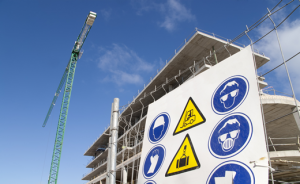 Roof work – a builder’s number one killer!
Roof work – a builder’s number one killer!
We all know 59% of fatalities on construction sites are from falls. And if you take a look at the HSE’s monthly bulletin, half of it is almost always stories of roof falls. Falls through fragile roofs, through skylights, falls from not using scaffolding, or from using ladders improperly for roof work.
Roof work kills so many builders in the UK because when accidents happen, the long drop is so often fatal. If you have a different accident which doesn’t involve falling several floors you’re far more likely to survive.
So with roof work above all construction site health and safety, it’s worth knowing how to keep safe.
With roof work, it’s all on you, not the worker
Just last month a solar panel installation company, a roofing firm, a West-London building company and plenty more found themselves in court after their workers either had a roof accident, or were found to be inadequately trained.
And with roof falls the fines are as heavy as the injuries! So to help keep everyone safe and happy, here are;
Your Ten Top Tips to Safe Roof Work
- Use scaffolding
Most residential roof work, almost all in fact, requires scaffolding. It can seem tempting to skip it for small jobs, but don’t.
- Use edge protection
Edge protection really does work. Use it to stop your workers falling from gable ends and eaves.
- Use scaffolding front and back
On terraced houses both sides of the building are a threat. Make sure you have scaffolding front and back and your workers will be safer.
- Scaffold around chimneys
Common places workers forget to scaffold are around chimneys and roof windows. And so they are often the places where accidents happen. Use scaffolding everywhere.
- Use ladders to access roofs, not to work
Ladders are fine for accessing the roof or scaffolding, but don’t use them for the actual roof work unless there’s just no other way.
- Train your workers well
This point could really come first. The training and competence of your roof workers is really what will save their lives. And you can play a big part in this with who you choose and how you train them.
- Avoid fragile roof surfaces
The edge of the roof is so obvious, it’s quite easy to pay attention to and be careful around. But it’s fragile roof areas that usually catch workers out, suddenly giving way beneath them. Sometimes they look very sturdy, like cement sheets.
Make sure you avoid putting weight on fragile roofs. Work on them from underneath or from an access platform if possible. Or cover them well as a last resort.
- Don’t throw materials down
These last three points are for general safe roof work. Not all roof-related accidents happen to the roof workers! Use a chute or something similar to take materials to the ground or street. Don’t ‘bomb’.
- Keep the street safe
Make sure materials don’t fall into the street. Use close fitting boards on the scaffolding or debris net sheeting.
- Keep pedestrians clear
Take responsibility for keeping passersby away from the area directly below your roof work.
There you have it, if you follow and enforce all these steps, your workers and your company will be a hundred times safer.
Do you have any questions about safe roof work?
Ask away, I’m always happy to talk.

A chartered (fellow) safety and risk management practitioner with 20+ years of experience. David provides a healthy dose of how-to articles, advice and guidance to make compliance easier for construction professionals, Architects and the built environment. Get social with David on Twitter and Linkedin.



